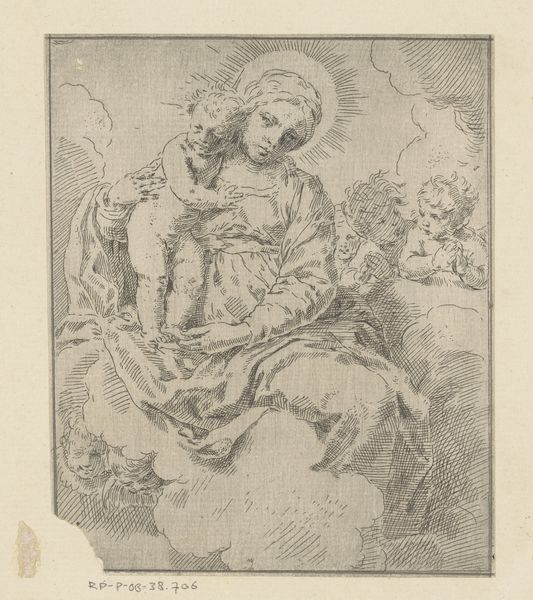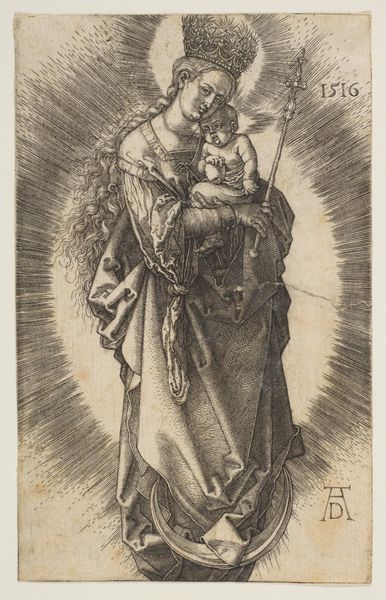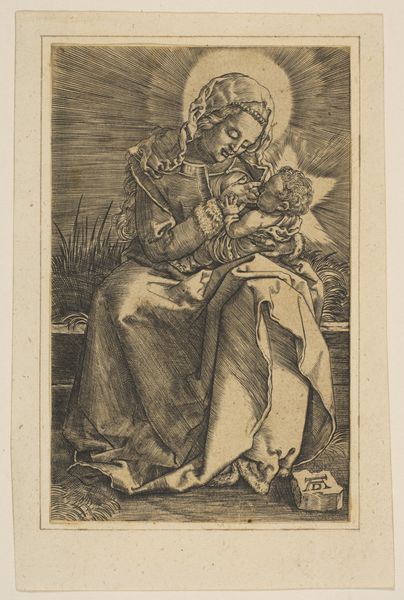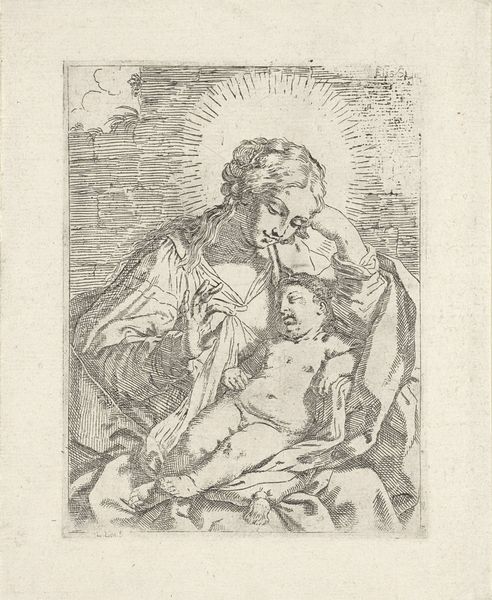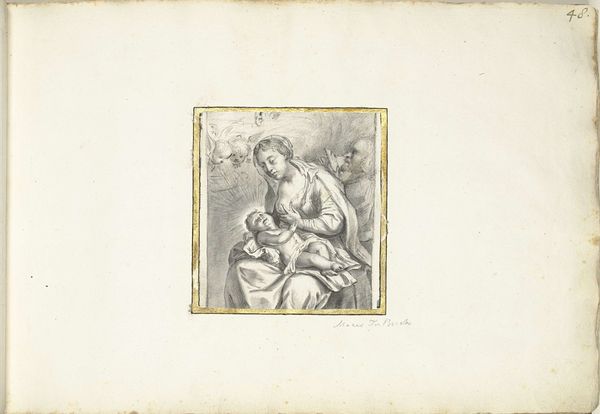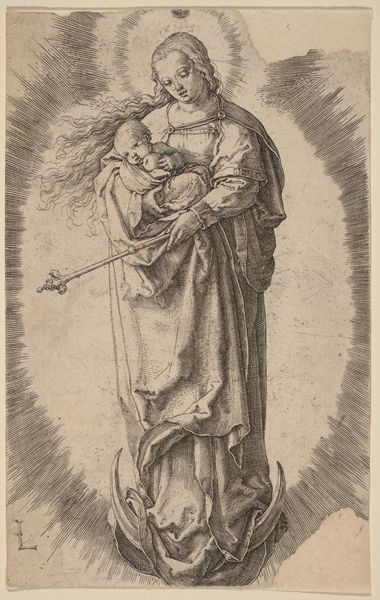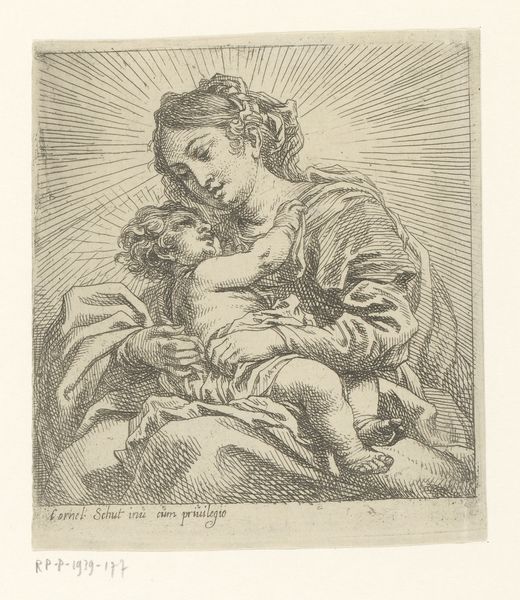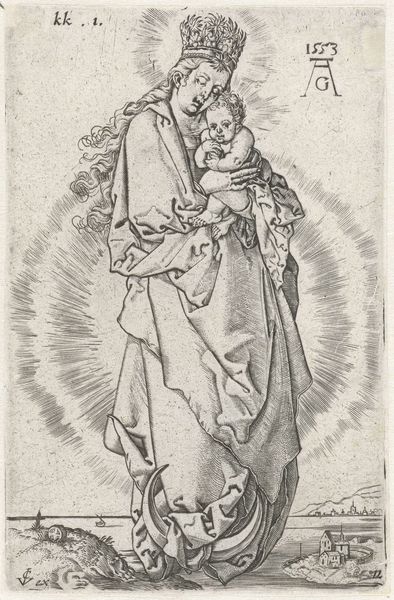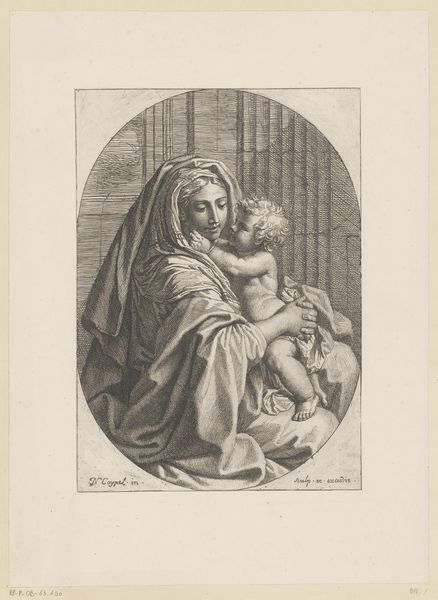
drawing, print, intaglio, engraving
#
portrait
#
drawing
#
baroque
# print
#
intaglio
#
pencil sketch
#
old engraving style
#
figuration
#
italian-renaissance
#
engraving
Dimensions: height 131 mm, width 99 mm
Copyright: Rijks Museum: Open Domain
Editor: Here we have Cornelis Schut’s "Madonna met Kind," likely created sometime between 1607 and 1655. It's an intaglio print, fairly small in scale. There's an undeniable tenderness in the way Mary holds Jesus, though the line work is quite rigid, it gives it a somewhat stark feeling. What jumps out at you? Curator: I'm immediately drawn to the symbolic weight of this image. It is interesting how Schut presents Mary: observe her gaze. What emotions do you recognize in her eyes, and how might they connect to centuries of cultural and religious beliefs associated with the Madonna? Editor: There's definitely a sense of serenity, maybe even a hint of melancholy knowing the future. But the radiating lines behind them... are those purely decorative? Curator: Not entirely. Consider the halo as more than just a visual marker. It signifies divinity, certainly, but also enlightenment, grace, and spiritual power. What does it say about the cultural understanding of motherhood and holiness during the Baroque period? The gaze upwards as if seeking divine guidance, despite her sorrow. Editor: So, it's not just about the image itself, but all the layers of meaning that have accumulated over time? It makes me think of how artists still use religious themes, but in completely different ways now. Curator: Precisely. This print carries centuries of cultural memory within its lines, it makes us contemplate faith and emotion. It reminds us how artists continue to tap into this reservoir to explore the human condition, doesn’t it? Editor: Definitely! Seeing how Schut uses these established symbols really sheds light on the power of visual language and continuity of icons through history. Thanks!
Comments
No comments
Be the first to comment and join the conversation on the ultimate creative platform.
